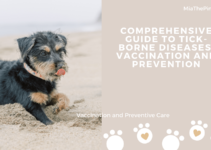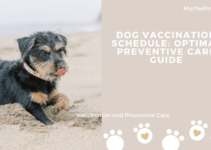Leptospirosis in Dogs: Understanding, Prevention, and Vaccination
Leptospirosis is a bacterial infection that affects dogs and can have serious health consequences if left untreated. Understanding this disease, its transmission, symptoms, and prevention measures is crucial for every dog owner. In this article, we will delve into the world of leptospirosis and provide you with essential information to keep your furry friend safe and healthy.
What is Leptospirosis?
Leptospirosis is caused by a group of bacteria called Leptospira. These bacteria are commonly found in soil, water, and infected animals. Dogs can contract the disease through contact with contaminated urine, water, or soil, making it a significant concern for both urban and rural environments.
Understanding the Transmission and Symptoms of Leptospirosis in Dogs
Leptospirosis can be transmitted to dogs through various routes, including direct contact with infected animals, ingestion of contaminated substances, or even through broken skin. Once the bacteria enter the dog’s body, they can spread rapidly through the bloodstream, affecting multiple organs such as the liver, kidneys, and central nervous system.
The symptoms of leptospirosis in dogs can vary, making it challenging to diagnose. Common signs include fever, lethargy, loss of appetite, vomiting, muscle pain, and increased thirst. In severe cases, dogs may experience jaundice, organ failure, and even death if left untreated.
The Importance of Prevention Measures for Leptospirosis
Prevention is key when it comes to leptospirosis. As a responsible dog owner, you should take necessary precautions to minimize the risk of your furry companion contracting this potentially life-threatening disease. Here are some essential prevention measures:
- Keep your dog away from stagnant water sources: Avoid letting your dog drink from puddles, ponds, or any other standing water sources that might be contaminated.
- Maintain good hygiene: Regularly clean your dog’s living area, food bowls, and water containers to prevent the buildup of bacteria.
- Use preventive products: Consult your veterinarian about appropriate tick and flea control methods, as these parasites can also transmit leptospirosis.
- Limit exposure to wildlife: Keep your dog away from contact with wildlife, as they can be carriers of the bacteria.
Vaccination Options for Leptospirosis in Dogs
Vaccination is an essential tool in preventing leptospirosis. There are several vaccines available that provide protection against the most common strains of Leptospira bacteria. Your veterinarian can recommend the appropriate vaccination schedule based on your dog’s age, lifestyle, and risk factors.
It’s important to note that the leptospirosis vaccine is not included in the standard core vaccines for dogs. Therefore, discussing the need for this vaccine with your veterinarian is crucial to ensure your dog’s overall health and well-being.
How to Protect Your Dog from Leptospirosis
In addition to vaccination and preventive measures, there are other steps you can take to protect your dog from leptospirosis:
- Regular veterinary check-ups: Schedule routine visits to your veterinarian to monitor your dog’s health and detect any potential issues early on.
- Proper leash control: When walking your dog, keep them on a leash to prevent them from wandering into potentially contaminated areas.
- Education and awareness: Stay informed about leptospirosis and its prevalence in your area. This knowledge will help you make informed decisions and take appropriate precautions.
Treatment and Recovery for Dogs with Leptospirosis
If your dog is diagnosed with leptospirosis, immediate treatment is crucial to increase their chances of recovery. Treatment typically involves antibiotics to combat the bacterial infection, as well as supportive care to manage symptoms and prevent complications.
Recovery from leptospirosis can vary depending on the severity of the infection and the overall health of the dog. It’s essential to follow your veterinarian’s instructions diligently and provide your dog with a calm and stress-free environment during the recovery process.
Remember, early detection, prevention, and timely treatment are vital in combating leptospirosis and ensuring the well-being of your beloved canine companion.
FAQs
1. What is leptospirosis?
Leptospirosis is a bacterial infection caused by the bacteria Leptospira. It can be found in soil, water, and infected animals, and can be transmitted to dogs through contact with contaminated urine, water, or soil.
2. What are the symptoms of leptospirosis in dogs?
The symptoms of leptospirosis in dogs can vary, but common signs include fever, lethargy, loss of appetite, vomiting, muscle pain, and increased thirst. In severe cases, dogs may experience jaundice, organ failure, and even death if left untreated.
3. How can leptospirosis be prevented?
To prevent leptospirosis, dog owners should keep their dogs away from stagnant water sources, maintain good hygiene by regularly cleaning living areas and food/water containers, use preventive products for ticks and fleas, and limit exposure to wildlife.
4. Are there vaccines available for leptospirosis in dogs?
Yes, there are vaccines available that provide protection against the most common strains of Leptospira bacteria. It is important to consult with your veterinarian to determine the appropriate vaccination schedule for your dog based on their age, lifestyle, and risk factors.
5. What is the treatment for dogs with leptospirosis?
Treatment for dogs with leptospirosis typically involves antibiotics to combat the bacterial infection, as well as supportive care to manage symptoms and prevent complications. Recovery can vary depending on the severity of the infection and the overall health of the dog.



